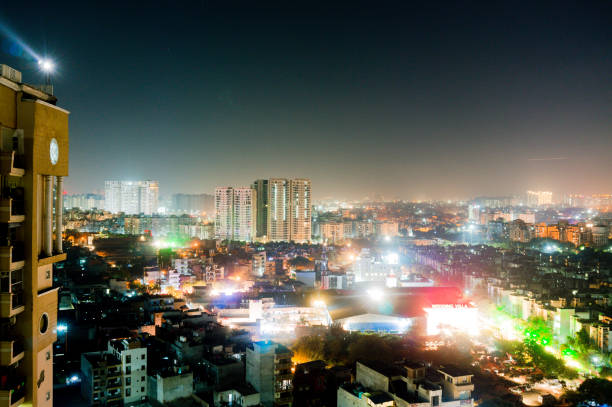India’s two iconic cities, Mumbai and Delhi, stand as towering representations of the country’s rich history, economic power, and cultural diversity. Both cities are megacities in every sense, offering a stark contrast in their rhythms of life, architectural marvels, and opportunities. The debate between these two titans has been ongoing for decades: Which city truly holds the crown? Let’s dive into what makes each of these cities unique in this tale of two megacities.
Historical Legacy
Delhi, the capital of India, boasts a history that spans millennia. Its roots can be traced back to the times of the Pandavas in the Mahabharata and later through the Mughal and British eras. As you walk through its streets, monuments like the Red Fort, Qutub Minar, and Humayun’s Tomb transport you to the grandeur of its historical past.
Mumbai, formerly known as Bombay, offers a different but equally compelling historical narrative. While it rose to prominence during British rule as a port city, its history is no less rich. The Gateway of India, Chhatrapati Shivaji Terminus, and the colonial architecture of South Mumbai are testimonies to its British influence and mercantile history.
Economy and Opportunities
Mumbai is often referred to as the financial capital of India, and for good reason. Home to the Bombay Stock Exchange (BSE), major financial institutions, and India’s booming entertainment industry, the city is the heart of India’s commercial activities. People from all over the country flock here in search of better opportunities, with many purchasing tickets to Mumbai to chase dreams in Bollywood or the corporate world. The city has an undeniable allure for the ambitious.
Delhi, on the other hand, serves as the political and administrative nerve centre of India. It is where power resides, and where key government institutions, foreign embassies, and multinational corporations are based. Delhi’s booming tech and service sectors also offer vast career opportunities, but its pace of life is often perceived as less cutthroat compared to Mumbai.
Cultural Contrast
Delhi and Mumbai offer diverse cultural landscapes shaped by their histories and the people who inhabit them.
Delhi is a city where tradition and modernity blend seamlessly. The city hosts vibrant festivals like Holi and Diwali with great fervor, and its food culture is unparalleled. Street food in Delhi, particularly chaat, parathas, and kebabs, is world-famous. From the majestic Mughal architecture to sprawling malls, the city has something for every kind of traveler.
Mumbai, meanwhile, is a cultural melting pot. The city is a hub of contemporary art, theater, music, and, of course, cinema. Festivals like Ganesh Chaturthi are celebrated with unmatched enthusiasm, with millions of people taking part in the grand processions. The city’s beaches, like Juhu and Marine Drive, provide a laid-back charm that complements its buzzing nightlife and street food culture, particularly the vada pav and bhel puri.
Pace of Life
The most significant difference between Mumbai and Delhi lies in their pace of life. Mumbai is known for its frenetic energy, earning it the moniker “the city that never sleeps.” The locals—referred to as Mumbaikars—are resilient and relentless. The local trains are the city’s lifeblood, bustling with people at all hours, and the sheer density of the population adds to the city’s fast-paced nature. Mumbai’s urgency can feel electrifying but exhausting.
Delhi, by contrast, has a more relaxed and spacious feel, despite being equally populous. While it has its own chaotic moments, especially in the Old Delhi markets, the wide roads, expansive parks, and the presence of large government buildings lend the city a sense of grandeur and calm. The metro system is efficient, but the overall vibe is more laid-back compared to Mumbai’s frantic pace.
Weather Woes
When it comes to climate, both cities have their share of challenges. Mumbai’s tropical climate means it experiences heavy monsoons that often result in flooding and waterlogged streets. However, the rest of the year is relatively pleasant, with warm winters and hot summers.
Delhi, on the other hand, swings between extreme temperatures. Summers can be unbearably hot, often reaching above 40°C, while winters are chilly with temperatures dipping close to freezing. The added factor of air pollution, especially in the winter months, makes Delhi’s weather a bigger concern for many residents.
The Final Verdict
Choosing between Mumbai and Delhi is no easy task. Mumbai offers relentless ambition, a vibrant cultural scene, and the lure of the sea, while Delhi provides a deep connection to India’s history, a more relaxed pace, and the seat of political power. For those in search of career opportunities in finance, media, or entertainment, booking tickets to Mumbai may be the best choice. However, if you seek a career in government or international affairs, and appreciate a blend of history and modernity, Delhi is the place to be.
Ultimately, the decision comes down to personal preference. Each city has its own strengths, challenges, and unique charm, making both essential to the fabric of India’s identity. Whether you find yourself in the fast-paced streets of Mumbai or the grand avenues of Delhi, one thing is certain—both cities will leave an indelible mark on you.

